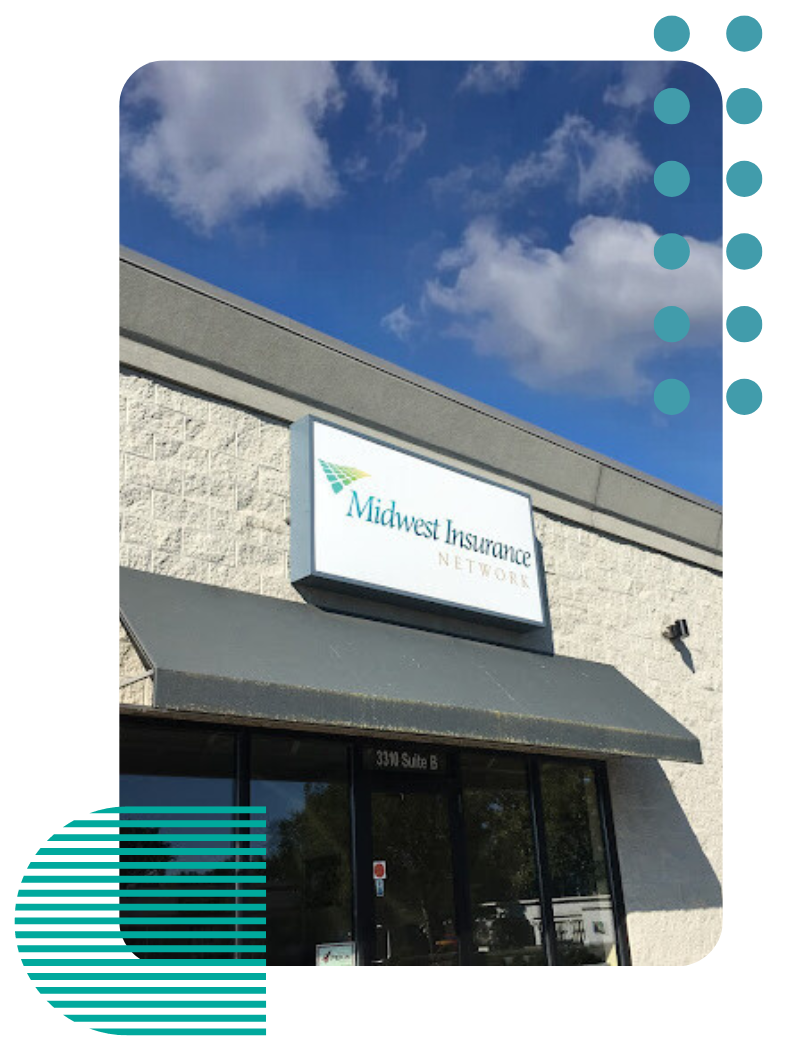Top 3 Recommended Policies
Index
Contact Us
Phone
agency@midwest-insure.com
Location
Northwood, OH
3310 Woodville Road, Suite D
Northwood, OH 43619
Elmore, OH
361 Rice Street
Elmore, OH 43416
Hotshot trucking in Ohio has become an essential niche within the freight and logistics industry, offering expedited delivery services that keep businesses running smoothly. However, with the unique demands and risks involved, securing the right insurance coverage is critical for hotshot truckers operating in the Buckeye State. This comprehensive guide will walk you through everything you need to know about Ohio hotshot trucking insurance, from understanding the risks and coverage options to navigating the rising costs and regulatory landscape.
Given the high stakes involved, including safety concerns and escalating insurance premiums, being well-informed can protect your business and livelihood. For example, Ohio experienced more than 2,000 large truck crashes resulting in fatalities or injuries just last year, highlighting the importance of adequate insurance and risk management strategies (statenews.org).
Understanding the Unique Risks of Hotshot Trucking in Ohio
Hotshot trucking involves transporting smaller, time-sensitive loads using medium-duty trucks, often with flatbeds or gooseneck trailers. While this sector offers flexibility and faster delivery times compared to traditional freight hauling, it also presents distinct challenges and risks.
Ohio’s diverse geography, including both urban centers and rural highways, contributes to varied driving conditions. A study analyzing truck-involved crashes in Ohio between 2011 and 2015 found that weather conditions, rural locations, and crash types like rear-end and sideswipe collisions significantly influence injury severity. These factors underscore the importance of tailored insurance policies that address the specific risks hotshot drivers face on Ohio’s roads (arxiv.org).
Additionally, the trucking profession in Ohio is considered high-risk, not just because of road hazards but also due to economic pressures. Walt Ryley, an assistant professor at Bowling Green State University, points out that low compensation for truckers can contribute to increased risk-taking and fatigue, which in turn affects safety and insurance claims (statenews.org).
The operational demands of hotshot trucking also require drivers to be highly adaptable. They must navigate a variety of cargo types, from construction materials to emergency supplies, each with its own handling requirements and regulations. This versatility can lead to increased stress, as drivers must constantly stay informed about the latest industry regulations, load specifications, and route planning strategies. Furthermore, the tight delivery schedules often leave little room for error, compelling drivers to make quick decisions that may compromise safety.
Moreover, the rise of e-commerce has intensified competition in the hotshot trucking industry, pushing drivers to take on more loads than they can safely manage. This can lead to longer hours on the road, which exacerbates fatigue and increases the likelihood of accidents. As the demand for rapid delivery continues to grow, it becomes crucial for hotshot truckers in Ohio to prioritize their health and well-being while navigating the challenges of their profession. Implementing better time management practices and utilizing technology for route optimization can help mitigate some of these risks, but the responsibility ultimately lies with the driver to maintain a balance between efficiency and safety.

Key Insurance Coverage Types for Ohio Hotshot Trucking
Hotshot trucking insurance typically requires several types of coverage to ensure comprehensive protection. Understanding these options will help you select the best policy for your business needs.
Primary Liability Insurance
This coverage is mandatory and protects against damages or injuries caused to other parties in an accident where you are at fault. Ohio requires a minimum amount of liability coverage for commercial vehicles, but many hotshot operators opt for higher limits to safeguard their assets. Additionally, it’s important for drivers to be aware of the potential for legal claims that can arise from accidents, which can lead to costly litigation. By investing in higher liability limits, operators can mitigate the financial risks associated with such claims, ensuring that they are not left vulnerable in the event of a serious incident.
Physical Damage Coverage
Physical damage insurance covers repairs or replacement of your truck and trailer if they are damaged due to collision, theft, vandalism, or natural disasters. Given the high repair costs and rising parts prices, this coverage is vital for hotshot operators who rely heavily on their equipment. Furthermore, having physical damage coverage can also provide peace of mind, allowing drivers to focus on their routes without the constant worry of unexpected repair bills. In a business where time is money, being sidelined due to equipment issues can be detrimental, making this coverage an essential part of any hotshot trucking policy.
Cargo Insurance
Since hotshot trucking often involves hauling valuable or time-sensitive goods, cargo insurance protects against loss or damage to the freight. Policies can be customized depending on the type of cargo, its value, and the specific risks involved. For instance, transporting perishables may require a different level of coverage compared to hauling machinery. Additionally, understanding the terms of your cargo insurance, including the exclusions and limitations, is crucial. This knowledge can help operators avoid unpleasant surprises during claims, ensuring they are adequately compensated for any losses incurred while on the road.
Motor Truck Cargo and Bobtail Coverage€
Additional coverage options like motor truck cargo insurance and bobtail insurance (which covers the truck when it’s not hauling a trailer) provide further layers of protection, especially for hotshot drivers who operate independently or lease their equipment. Bobtail insurance is particularly important for those who may find themselves in situations where they are driving without a trailer attached, as accidents can still occur during these times. Moreover, motor truck cargo insurance not only covers the physical loss of the cargo but can also include liability for damage to the cargo itself, offering a comprehensive safety net for hotshot operators who transport high-value goods. This dual-layered approach to coverage ensures that drivers can operate with confidence, knowing they have protection in various scenarios that could impact their business.
Why Ohio Hotshot Trucking Insurance Costs Are Rising
Insurance premiums for hotshot trucking in Ohio have been climbing steadily, influenced by multiple factors that affect the entire trucking industry.
One of the most significant drivers of rising costs is the increase in insurance claims and repair expenses. A recent industry report highlighted that carriers like Knight-Swift saw their insurance and claims costs surge by 37% year-over-year, reaching $275 million in just the first half of 2023 (truckingdive.com).
Moreover, commercial auto insurance premiums have risen for 50 consecutive quarters, with increases of 8.3% in Q1 and 10.4% in Q2 of 2023 alone. This persistent upward trend reflects broader economic pressures such as inflation and higher repair costs, which have pushed trucking insurance prices to all-time highs as of August 2025 (overdriveonline.com).
Another critical factor is the phenomenon known as social inflation. The American Transportation Research Institute reports that “nuclear verdicts”—extremely large jury awards in trucking accident lawsuits—have increased nearly tenfold over the past decade, with average verdicts now exceeding $22 million. These verdicts drive up insurance costs as carriers face greater financial risk (thehortongroup.com).
In addition to these factors, the ongoing driver shortage has exacerbated the situation. With fewer qualified drivers on the road, the remaining drivers are often overworked, leading to increased fatigue-related incidents and accidents. This not only results in higher claims but also contributes to a perception of greater risk among insurers, prompting them to raise premiums even further. The American Trucking Associations has reported a shortage of over 80,000 drivers, a figure expected to grow, which puts additional pressure on the industry and its associated costs.
Furthermore, the rise of technology and telematics in the trucking industry has introduced new variables into the insurance equation. While these technologies can enhance safety and efficiency, they also require significant upfront investment and ongoing maintenance. Insurers are now evaluating how these advancements impact risk profiles, leading to a complex interplay of costs that can vary widely between carriers. As the industry adapts to these technological changes, insurers may adjust their pricing models to reflect the evolving landscape, further influencing the cost of hotshot trucking insurance in Ohio.
Factors Influencing Ohio Hotshot Trucking Insurance Premiums
Understanding what influences your insurance premiums can help you manage costs and negotiate better coverage terms.
Geographic location plays a significant role. Ohio’s mix of urban and rural roadways, combined with varying traffic patterns and weather conditions, can affect risk assessments by insurers. Monte King, principal at Commercial Insurance Associates, explains that factors such as “nuclear verdicts” and location-based risk profiles heavily impact premium pricing for trucking companies (truckingdive.com).
Other considerations include the driver’s safety record, the age and condition of the truck, the types of cargo hauled, and the company’s claims history. Hotshot trucking companies with strong safety programs and experienced drivers often benefit from lower premiums.
Additionally, the type of cargo being transported can significantly influence insurance costs. High-value or hazardous materials typically come with higher premiums due to the increased risk associated with their transport. For instance, a hotshot trucking company specializing in transporting machinery may face different insurance challenges compared to one that primarily hauls perishable goods. Insurers assess the potential for loss or damage based on the nature of the cargo, which can lead to varying premium rates.
Moreover, the trucking company’s operational practices can also play a crucial role in determining insurance costs. Companies that implement rigorous maintenance schedules for their vehicles and invest in technology such as GPS tracking and telematics can demonstrate a commitment to safety and efficiency. This proactive approach not only helps in reducing the likelihood of accidents but can also be appealing to insurers, potentially leading to lower premiums. As the trucking industry continues to evolve, adopting innovative practices may become increasingly essential for managing insurance costs effectively.

Tips for Securing the Best Ohio Hotshot Trucking Insurance
Given the complexities and costs involved, here are some practical tips to help hotshot truckers in Ohio find the right insurance coverage without breaking the bank.
Shop Around and Compare Quotes
Insurance rates can vary widely between providers. Request quotes from multiple companies specializing in commercial trucking insurance to find competitive rates and coverage options tailored to hotshot operations. Don't hesitate to ask for clarification on what each quote includes, as some policies may have hidden fees or exclusions that could affect your overall costs. Additionally, consider using online comparison tools that can streamline this process, allowing you to evaluate several options side by side.
Invest in Safety and Training
Maintaining a clean driving record and investing in driver safety training programs can reduce the risk of accidents and claims, leading to better insurance rates over time. Many insurers offer discounts for drivers who complete safety courses or certifications, so it's worthwhile to explore these opportunities. Furthermore, implementing regular safety audits and vehicle maintenance checks can not only enhance your safety profile but also demonstrate to insurers that you prioritize risk management, potentially leading to even more favorable rates.
Consider Higher Deductibles
Opting for a higher deductible can lower your premium, but be sure you have the financial capacity to cover out-of-pocket costs in the event of a claim. It's essential to calculate the potential savings against the risk of a larger upfront payment should an accident occur. Additionally, consider creating a dedicated savings fund for emergencies, which can provide peace of mind and ensure that you're prepared to handle unexpected expenses without jeopardizing your cash flow.
Bundle Coverage When Possible
Some insurers offer discounts if you bundle multiple policies, such as liability, cargo, and physical damage coverage, under one provider. This not only simplifies your insurance management but can also lead to significant savings. When bundling, make sure to review the terms of each policy carefully to ensure that you are not sacrificing essential coverage for the sake of a lower premium. Additionally, inquire about any loyalty programs or long-term discounts that may apply if you maintain your policies with the same provider over time.
Stay Informed About Regulatory Changes
Ohio’s trucking regulations and insurance requirements can evolve. Staying updated ensures your coverage remains compliant and adequate for your operational needs. Joining professional organizations or forums can be beneficial, as they often provide resources and updates on legislative changes affecting the trucking industry. Furthermore, consider subscribing to industry newsletters or following relevant social media channels to keep abreast of best practices and new developments that could impact your business and insurance needs.
Conclusion: Protecting Your Ohio Hotshot Trucking Business
Hotshot trucking in Ohio is a demanding but rewarding business that requires careful attention to risk management and insurance coverage. With over 2,000 large truck crashes resulting in injuries or fatalities in Ohio last year, the stakes are high for operators who want to protect their assets, drivers, and cargo (statenews.org).
Rising insurance premiums, driven by inflation, repair costs, and social inflation factors such as nuclear verdicts, make it essential to approach insurance thoughtfully. By understanding the unique risks, coverage options, and cost drivers, Ohio hotshot truckers can secure policies that provide both protection and value.
Ultimately, partnering with experienced insurance providers and maintaining a strong safety culture will help hotshot trucking businesses thrive despite the challenges of today’s insurance landscape.




